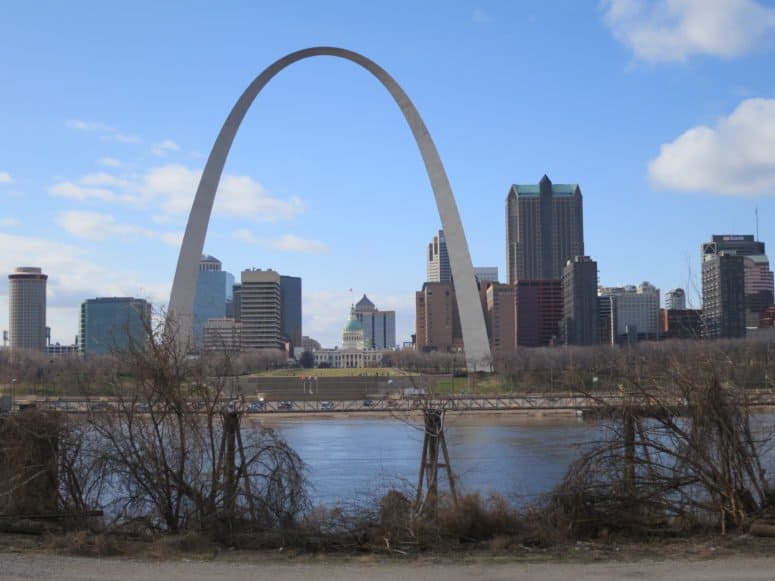The attention in the room turned to me and to my outstretched hand—in it, a dry-erase marker acted as a pointer towards the board. Neatly underlined, a word-pairing: “Conflict ← → Setting.”
The learning outcome for the class meeting: to understand the connection between conflict and settings in storytelling. The students and I had carefully walked through the conceptual connections. We were nearly there.
We reviewed examples: Spider-Man, Hatchet, Wonder Woman… Kendrick Lamar and Deadpool appeared, though not by my instigation. Then, the students were given a brief period to create a setting and—within that setting—to create a list of potential conflicts.
Marker in hand, I ask, “So who can give me a potential setting?”
Almost immediately, a couple of voices chimed, “Saint Louis.”
“OK. Perfect,” and I wrote it on the board. I was ready for this. A notepad of my carefully written script lay on the podium just within sight. Listed neatly in a corner, St. Louis. Beneath it, a bulleted list of potential conflicts.
“Saint Louis as our setting… What could be a list of conflicts which might occur here?” The list in my notepad held the imagined innocence of childhood: What if the animals escaped the zoo? What if aliens landed in Forest Park? What if robots attacked the school?
“Drugs.”
“Huh. Ok.” I wrote it on the board.
“Drug deals.”
“Ok.” I drew an arrow from drugs, adding drug deals. “What else?”
“Drug violence.” I nodded and added violence with another arrow. “What about something besides drugs? What other conflicts could arise?”
“Stealing! Like a robbery. Maybe someone is stealing drugs.”
“Huh. Ok. ‘stealing/robbery.’ What else though, besides drugs? What other conflicts could be related to our setting?”
“Cops!”
I turn from the board, confused. “Cops?”
The student responded, “Yeah. Like cops fighting and shooting people.”
Another voice chimed in, “Yeah. Cops killing black people. You know what I mean?”
I nodded following the conversation. I’ve read news stories, court cases, personal narratives, blogs, twitter, etc… I’ve been in St. Louis long enough to have visited many of the sites and people involved. I know the scarring and pain of the city, but I don’t know it personally or experientially. But my students, these children, do.
***
They stared at me for a moment as the marker slowly fell from the whiteboard to my side. My eyes flitted between the students intently listening, and my notes neatly planned and waiting. But, I hadn’t planned for this.
The answers from my students scared me: they had realities—experiences so far removed from those of childhood. They held their pens in their hands, staring at me. Kids—just kids in middle school. Yet, I was acutely aware as we stared at each other that I was the one who was naïve… I was out of my depth.
I nodded, realizing that they were not nearly as sheltered as I was at their age. I thought of the unfair realities in the news and the city, realizing that these realities were not separate from the children sitting before me. I capped my marker and held it tightly in my hand. I leaned carefully, half-sitting, on the edge of the desk at the front of the room. “What else?” And, I listened.
For a fleeting moment, we switched roles. They told me about a different side to the city—one which I’ve read about and heard about, but one very different from my personal experience.
I came to teach them creative writing and effective storytelling, and here they were giving me faces, fears, and memories of their own struggles. Moments which were so far from my own experience that they might have been fiction… all became real in their telling.
***
As often happens with middle school boys, our conversation moved off topic… and the moment passed. Eventually, we turned back to the lesson plan. They worked quietly, choosing to create stories as fake as robots and aliens attacking St. Louis—far safer stories than the ones they had just shared.
As they escaped into fantasy and fiction, I thought about the realities they had shared with me. In teaching them about the world of stories, they gave me a privileged glimpse into their own world—settings full of conflicts, which no child should have to experience.
News stories, blogs, and tweets capture momentary glimpses into an unjust system, but the stories of children—affected, but often forgotten by the coverage—do something different. My students, in a brief moment, exhibited the most effective storytelling that I’ve ever witnessed. There was something within their stories which no newspaper or reporter or novelist can capture—an element of unfiltered truth which broke my heart. While the realities I’ve read and seen have moved me, those stories from my students—with all their horror, fear, and pain—have made it impossible for me to stomach such systems and injustices.
-//-
The cover image, from Flickr user Paul Sableman, can be found here.


